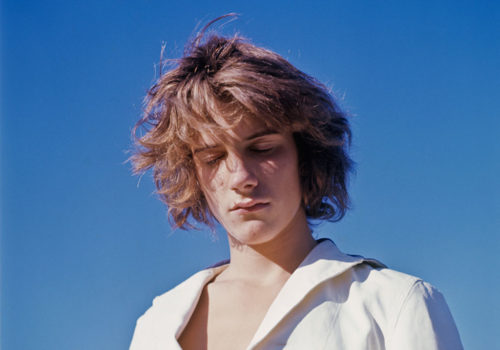When he was a teenager, Bernard Faucon wanted to be a painter. Or a writer. He wanted to be like the artists at his grandmother’s house. Faucon split his time between Apt, in Southeastern France, where he went to high school, and a large property in Saint Martian, a little higher in altitude and dotted with cherry trees, lavender and ancient ruins. Faucon had his own cottage there. In the heart of Lubéron, his parents had built a marvelous house for children, open from late spring to autumn. It was here in this world unto itself that Faucon, an avid reader of philosophy—his book makes reference to the Thomist philosopher Jacques Maritain—also took many pictures.
“I was 15, 16, 17. I took an immense pleasure in making my 6×6 color slides, contemplating the little transparent squares, fiery impressions of what I loved… Here, in their naive lyricism, were the age-old illuminations of a young pantheist, catholic and lover.”
That was half a century ago, before photography even, since Faucon doesn’t consider his work from this “ancient” era to be photography. It is, rather, the matrix of an intimate, mental, visionary world, a world of dreams captured on Semflex with square slides and color film (to which he will remain forever loyal), with a rare economy of means and sensitivity to color.
Now on display, these Fresson prints, which are in perfect harmony with these impressionistic settings, show simply that everything was there from day one. The right distance, the absence of effect, the light, the color, the precision of an unadorned frame. We see the family, the great oak tree in front of the house, the sunsets, the children, the grandmother who watches after them with a mixture of tenderness and concern and who walks through the tall grass, carrying the weight of old age with a beautiful serenity. These will one day be the settings for the mannequins in Les grandes vacances, bathed in light, sometimes “after the storm.”
The whole set of pictures is imbued with emotion and without gravity, which combines the relationship we have with “before” images, because they remind us of our own mortality and inevitable aging, and the feeling of seeing how a major work, in its total authenticity, has existed since the early years.
Read the full article on the French version of L’Oeil.
EXHIBITION
Until April 25, 2014
VU’ La Galerie
58 Rue Saint-Lazare
75009 Paris
France
Tel: 01 53 01 85 85
BOOK
Le temps d’avant
Editions de l’Œil
Textd and photographs by Bernard Faucon
96 pages
format 20cm x 17 cm
1 500 ex.
Price : 25 euros
















